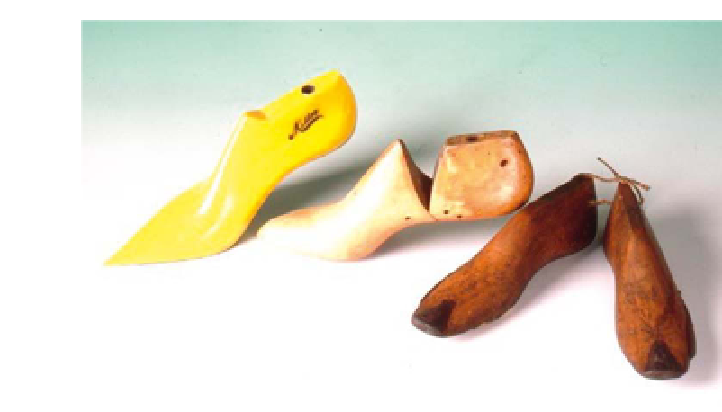what-when-how
In Depth Tutorials and Information
Figure 5.3
Traditional hardwood lasts circa 1800, single wooden last 1930 and plastic
lasts circa 1960
are used in some manufacturing processes. The last is not an exact
replica of the foot, although some dimensions of the last do correspond
closely to those of the foot - particularly the circumference around the
metatarso-phalangeal joints. The design of the last is determined by the
shoe manufacturer. For some retail shoe companies, many thousands of
people are measured annually to make sure that the lasts produced by
the company match the feet of the general population.
A model maker translates specifications into original models and then
other sizes and widths are graded up or down from the original, but
holding true to the last shape. There are over 30 measurements required
in the construction of a modern last. Lasts can be straight, that is, the
inner and outer borders are straight; or curved (flared), either in-flared or
out-flared according to the design of the footwear.
The considerations made by the last maker include the foot move-
ments, the manufacturing process, the intended population, the purpose
of footwear and fashion design. The design and shape of the shoe are
dependent on the shape of the last; for example, a last for a high-heeled
shoe needs to be shorter than the foot for which it is being designed to
compensate for the shortened equinus position in which the foot is held.
A last for a court shoe will differ from the last required to make a lace-up
shoe by having an extremely curved heel and shallow toe area in order
for the shoe to stay on the foot. The distance between the ground and















































